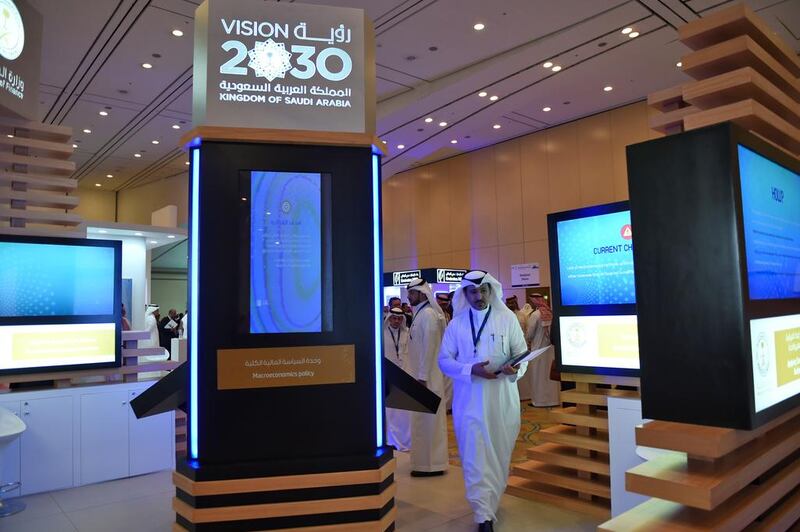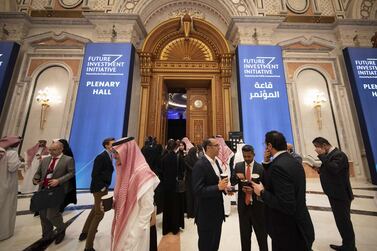Saudi Arabia's economy, the largest in the Arab world, is projected to expand 2.3 per cent next year after growing an expected 0.9 per cent this year, as the kingdom presses on with economic reforms and diversification that support its non-oil private sector, the finance minister said in a pre-budget statement for the 2020 fiscal year.
The kingdom expects non-oil GDP growth to accelerate next year after increasing 2.5 per cent in the first half of this year, Mohammed Al Jadaan said at a briefing on Thursday. Overall GDP increased 1.1 per cent over the same period.
Saudi Arabia has been boosting alternative revenue lines such as construction and tourism following a three-year oil price slump that began in 2014. A key pillar of its Vision 2030 programme is increasing non-oil economic growth, which accelerated at the fastest pace in four years in the second quarter of this year.
The ratio of non-oil revenues to non-oil GDP is expected to increase to 16 per cent at the end of this year compared to only 7 per cent in 2012.
Spending is expected at 1.02 trillion Saudi riyals for 2020 compared with 1.048tn projected in 2019, the minister said ahead of the final budget announcement to take place in December. The focus will be on “improving the efficiency of spending without any disruption to diversification and transformation plans”, the Ministry of Finance statement said.
Revenues are expected to reach 833bn riyals next year, in comparison to an estimated 917bn this year.
The budget deficit is expected to continue to decrease in 2019 to 4.7 per cent of GDP, compared to 5.9 per cent last year. However, the budget deficit will widen to 187 billion riyals next year, or 6.5 per cent of GDP from a projected 131 billion riyals for this year.
There are currently 22 support initiatives for the private sector, such as cash subsidies and financing guarantees, which aim to strengthen its role as the main driver of economic growth and job creation. Major projects across various sectors “will support non-oil GDP growth in 2020 and over the medium term”, the statement said.
At the Future Investment Initiative in Riyadh this past week, Saudi Arabia closed 24 investment deals worth a total of $20bn. The largest deals included the $5bn mixed-use real estate Arabian Dream project and $11.45bn Air Product Qudra project.
“FDI has grown by 10 per cent and local investment is on the rise,” Mr Al Jadaan said at the conference. “Confidence is growing, and public-private partnerships are allowing us to ease the burden on government budgets.”
Saudi Arabia’s construction sector is growing for the first time in five years, increasing 3 per cent in the first half of 2019 compared to a decrease of 2.8 per cent during the same period last year. Other sectors that have grown in the first half year-on-year include: wholesale, retail trade, restaurants and hotels by 3.8 per cent; finance, insurance and real estate by 5.1 per cent; transport, storage and communication by 5.6 per cent; and community and social activities, including arts and entertainment by 5.9 per cent.
“We want the Saudi economy to be immune to global and local challenges,” Mr Al Jadaan said at FII. “This is what we are trying to do to improve sectors, take care of the digital transformation of the government sector, and take fundamental structural reform measures that I believe have put us on the right track towards our endeavour.”
According to the IMF’s latest projection last month, economies of Gulf countries are projected to grow 0.7 per cent in 2019, down from 2 per cent last year, before rebounding to 2.5 per cent in 2020. The non-oil sector in the GCC will grow from 1.9 per cent last year to 2.4 per cent in 2019 and 2.8 per cent in 2020, according to the Washington-based lender.








